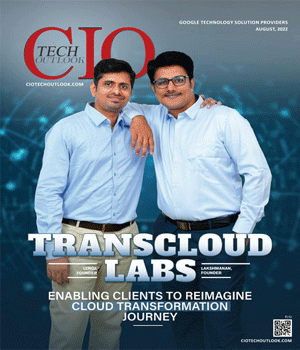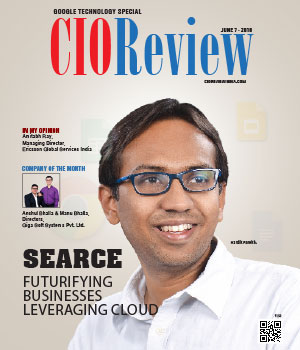
How Right Tools Create Easy Consumer Experiences While Maximizing Store Efficiency And Profits
Ganesh Lakshminarayanan, COO, Capillary Technologies | Thursday, 22 August 2019, 11:46 IST
 As businesses, we’re constantly looking for the next edge. The next tool that’ll streamline operations, make us that much more efficient and let us have an easier time doing the things we want to do. As consumer expectations are also evolving rapidly, these days, retailers are forced to find a myriad of ways to meet these expectations. The cherry on top is that, often, such initiatives are also making it easier for businesses to operate efficiently and even increase their revenues. Here are a few tools that are helping both the consumer and the business make their lives easier.
As businesses, we’re constantly looking for the next edge. The next tool that’ll streamline operations, make us that much more efficient and let us have an easier time doing the things we want to do. As consumer expectations are also evolving rapidly, these days, retailers are forced to find a myriad of ways to meet these expectations. The cherry on top is that, often, such initiatives are also making it easier for businesses to operate efficiently and even increase their revenues. Here are a few tools that are helping both the consumer and the business make their lives easier.
Making the Most of Mobile
There was a time when computers were expensive. They then became cheaper, faster, smaller and mobile. Today’s smartphones can do a lot for your personal life, but with the right apps, it can do a lot for any consumer business as well. Many retailers are leveraging mobile devices in their physical stores to assist their sales staff and help them sell better.
Most consumers expect the store staff to know everything about the products and their availability etc. but training sales staff can often be slow and cumbersome. Enabling the store staff with a mobile app that can help them stay updated with product information and give out product recommendations to customers. It can also give the staff visibility into product availability, and even allow them to book or order an item on behalf of the customer. This can do wonders for store sales. These apps can also work as queue busters by enabling store associates to assist customers to checkout on the spot, instead of having to go through the billing counter.
“Many retailers are leveraging mobile devices in their physical stores to assist their sales staff and help them sell better”
Such apps can also come with access to single view customer profiles and Artificial Intelligence powered recommendations that can help store associates to intelligently recommend products according to known consumer preferences. And you don’t have to buy expensive hardware for this. Most retailers today are leveraging their staff’s personal devices for such initiatives, thereby reducing costs while increasing store performance.
Making Aisles Endless
Though, store staff can be more helpful with mobile technology, on a busy day, you might not have enough staff on the floor to serve all customers. Also, some customers don’t really want to interact a lot with the store staff. They may want to browse through the products by themselves and come up with a decision as to whether they want to buy or not. Such customers can be worrisome for a retailer as one can’t really stock their entire inventory for display at every single store.
This is why retailers are also coming up with a way for consumers to go through their entire offering by setting up self-serve kiosks and tablets, also called, ‘endless aisles’. This way your consumers can browse and buy the products they want, in the size or color they’re looking for etc. at the store itself even when it’s not in stock at the store. Not only does it reduce the need for more staff at the store, retailers also don’t lose out on sales due to stock outs.
Inventory anywhere sold everywhere
For enabling in-store consumer experiences such as the ones I’ve talked about, retailers must have a single view of their inventory across their organization. This often makes all the difference in the efficiency of backend operations and quality of the front end experience for a consumer business. An integrated Warehouse Management System can help businesses keep track of their inventory no matter where it is headed or stocked.
Having a single view of inventory would not only let consumer choose from all products that are available, but it’ll also help retailers manage fulfilment across all channels efficiently. This is truly essential today, since consumers aren’t just shopping at physical stores but could be interacting with a brand anywhere. Having integrated systems across the organization, can help retailers assign orders from across channels to the nearest stores or warehouses optimally, striking a balance between the quickest and most cost effective option to fulfil. This helps mitigate channel conflict between the retailer’s offline stores, online stores and marketplaces, while your consumers get what they want, when they want it, without facing any stock out errors.
Delivering Anywhere, Efficiently
Many businesses are still concerned about how expensive and cumbersome order fulfilment is. It has even kept some business from going online. Well, it doesn’t have to be like that with an integrated Order Management System. With an OMS, businesses get a single view of all orders coming in from across all channels and locations, so they can work on turning them around quickly. Modern order management systems can track the entire order lifecycle, right from when an order is generated, to managing order returns and payment refunds/reconciliation.
An Order Management System can also determine the best way to ship these products depending on the delivery type and time. Last mile logistics optimization (truck load + route) with the help of an Order Management System can save businesses up to 6 percent in costs. Integration of existing systems with Order and Warehouse Management Systems can help you fulfil accurately, efficiently and on time, every time.
If you’re running a business today, it’s very difficult for you to escape IT implementations, but when you choose the right tools, not only do you make your offerings and experience better, you’re also increasing your business efficiency, store performance, revenues and customer satisfaction. Such initiatives can help you tap into growth that’s sustainable in the long run.
CIO Viewpoint
Leverage Google Cloud For Productivity-focused...
By Shijo Joseph, CIO, East-West Seed
The Next Billion Internet Users: What CIOS Need...
By Ashwin Rangan, SVP Engineering & CIO, ICANN
Leveraging ERP to Integrate Business Processes
By Beena Nayar, Head-IT, Forbes Marshall
CXO Insights
Cloud Computing: Newer Models To Mitigate Risks
By Sumed Marwaha, Regional Services Vice President and MD, Unisys India
How Right Tools Create Easy Consumer...
By Ganesh Lakshminarayanan, COO, Capillary Technologies
Cloud Data Services Sparking Change In The...




.jpg)




